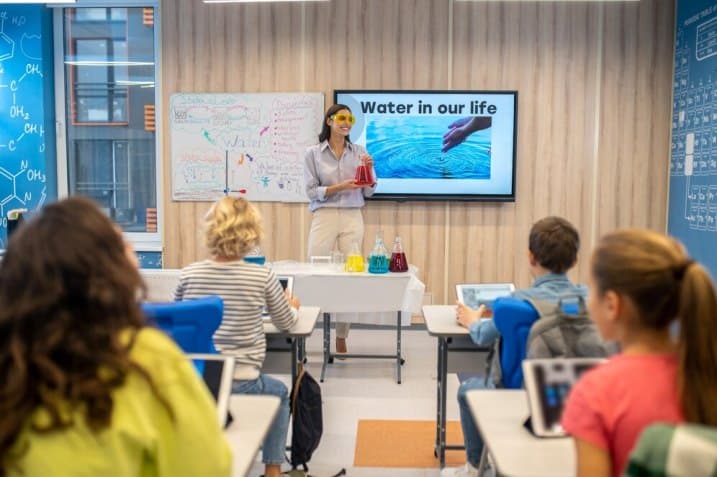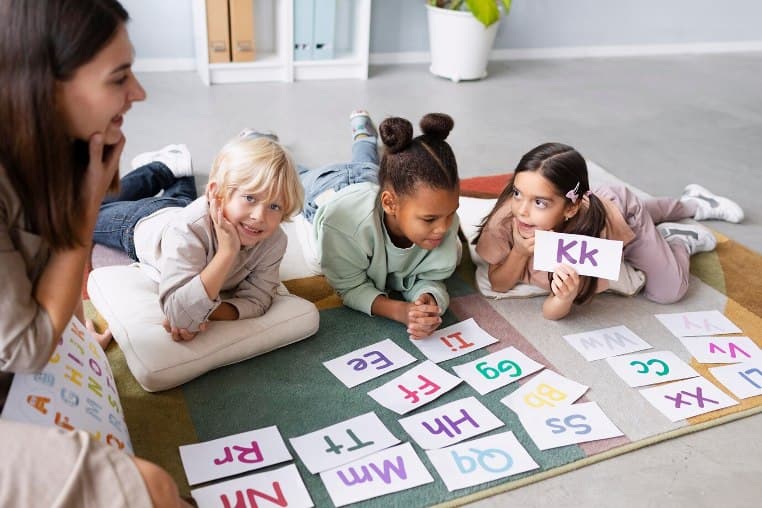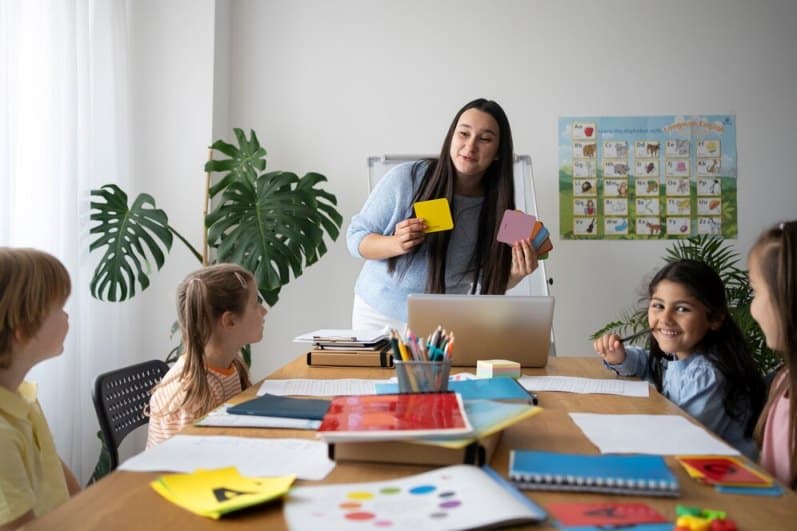In the field of education, the terms tutoring and teaching are often used interchangeably, but they do possess distinct differences. Tutoring refers to the practice of providing individualized instruction and support to help students improve their academic performance in specific subjects or skills. It typically involves one-on-one interaction between a tutor and a student, allowing for personalized attention and tailored learning experiences.
On the other hand, teaching involves the delivery of educational content to a group of students in a classroom setting. Teachers follow a prescribed curriculum, facilitate learning through lectures and discussions, and assess students’ understanding through assignments and assessments.
While both tutoring and teaching aim to enhance students’ knowledge and understanding, the difference lies in the level of individual attention and customization of instruction.
What is Tutoring?
Tutoring is a form of focused and personalized instruction that takes place outside of the traditional classroom setting. Tutoring provides individualized attention and support to students who may require extra assistance in specific subjects. It involves a close student-tutor relationship, where the tutor serves as a mentor, guide, and facilitator of learning.
During tutoring sessions, tutors work closely with students to identify their areas of weakness and develop strategies to address them. Tutors often utilize various teaching methods, such as explaining concepts, providing additional resources, and offering hands-on practice.
The goal of tutoring is to help students grasp difficult concepts, improve their academic performance, and gain confidence in their abilities.
What is Teaching?
Teaching is the primary method of instruction that takes place within a classroom environment. Teaching involves the planning, organization, and delivery of educational content to groups of students. Teachers play a central role in designing curriculum, creating lesson plans, and implementing instructional strategies to engage and educate a diverse range of learners.
Teachers focus on imparting knowledge, developing critical thinking skills, and fostering a positive learning environment. They utilize different teaching techniques, such as lectures, group discussions, multimedia resources, and hands-on activities, to facilitate student learning.
The objective of teaching is to provide a comprehensive and structured educational experience that enables students to acquire knowledge and skills across various subjects.
It is important to note that while both tutoring and teaching share the common goal of promoting learning, they differ in terms of scope, location, and instructional methods.
Related Content: Ideas for inclusive education in the classroom
Difference Between Tutoring And Teaching
Tutoring and teaching are both educational activities, but they differ in several key aspects, including the goals, objectives, focus, techniques and approaches. Here are some distinctions between tutoring and teaching:
Goals And Objectives
When it comes to education, both tutoring and teaching play a crucial role in a student’s academic journey. While they may seem similar, there are distinct differences between the two approaches. Understanding these differences can help parents and students choose the right form of educational support. One way to differentiate between tutoring and teaching is by examining their goals and objectives.
Tutoring Goals And Objectives
Tutoring is an individualized approach that focuses on specific areas where students may be struggling. The goals and objectives of tutoring are tailored to meet the unique needs of each student. Unlike the traditional classroom setting, tutors can provide personalized attention, identifying areas of weakness and developing targeted strategies to overcome them.
Tutors set goals that are specific, measurable, achievable, relevant, and time-bound (SMART goals). For example, a tutor may aim to improve a student’s understanding of algebraic concepts by 20% within two months. By setting such goals, tutors help students stay motivated, track their progress, and celebrate their achievements.
Teaching Goals And Objectives
Teaching, on the other hand, involves a broader scope and focuses on imparting knowledge across various subjects and topics. The goals and objectives of teaching are aligned with curriculum standards and aim to provide a comprehensive understanding of the subject matter.
In a classroom setting, teachers have a group of students to educate, making it important for them to cover a wide range of topics within a set timeframe. They focus on delivering lessons, promoting active participation, and assessing students’ understanding through assignments and exams.
The goals and objectives of teaching are often structured around educational standards and the progression of skills and knowledge throughout the academic year. Teachers aim to ensure students grasp key concepts, apply them in real-life situations, and demonstrate a deep understanding of the subjects they teach.
Setting
When it comes to understanding the difference between tutoring and teaching, one crucial aspect to consider is the setting in which these two educational approaches take place. The setting plays a significant role in shaping the learning experience and can greatly impact the effectiveness of the instruction provided.
Tutoring Setting
Tutoring is typically conducted in a more personalized and intimate setting. Unlike traditional classroom teaching, tutoring often takes place on a one-on-one basis or in small groups, allowing for a greater level of individual attention.
This setting creates a comfortable and supportive environment that fosters strong student-tutor relationships. Tutoring sessions can be held in various locations, such as the tutor’s home, the student’s home, or a designated tutoring center. The flexibility in choosing the setting adds to the convenience and accessibility of tutoring services.
In a tutoring setting, the tutor has the freedom to tailor their approach to the specific needs and learning style of each student. As a result, tutoring sessions can be highly customized, focusing on the areas where the student requires extra support.
This individualized attention allows for a more targeted and efficient learning experience, addressing any knowledge gaps and enabling the student to progress at their own pace.
Tutoring settings often promote an interactive and collaborative learning environment, where students are encouraged to actively participate and engage with the material.
Teaching Setting
Teaching, on the other hand, commonly takes place in a more formal and structured setting, such as a classroom. Teachers are responsible for instructing multiple students simultaneously, which presents both benefits and challenges.
Classrooms provide a dynamic and diverse learning environment, where students can interact with their peers and develop important social skills. They also foster a sense of community and encourage cooperative learning.
In a teaching setting, the teacher follows a predetermined curriculum and lesson plan, covering a wide range of topics and concepts. The instruction is often standardized to meet educational requirements and ensure consistency across different students.
While teachers strive to address individual student needs, the constraints of a classroom setting may limit the level of personalized attention they can provide. Students who require additional support may need to seek extra help outside the classroom.
To accommodate the larger student population, teaching settings are equipped with resources and materials that cater to a broader range of learners. Teachers employ instructional strategies that aim to engage and motivate students collectively, while still considering individual learning styles.
The classroom setting promotes a structured and disciplined learning environment, preparing students for academic challenges and fostering the development of important life skills, such as time management and collaboration.
Read Also: What Can You Contribute to the School As a Teacher?
Interaction And Focus
Interaction and focus play a crucial role in both tutoring and teaching, but the approaches differ significantly. The way educators interact and focus on their students can greatly influence the learning experience.
Tutoring Interaction And Focus
Tutoring offers a more personalized and one-on-one approach, ensuring a higher level of interaction and focus. Tutors work closely with their students, adapting their teaching methods to suit individual needs. This tailored approach allows tutors to identify and address specific areas where students may struggle, providing immediate support and guidance.
In a tutoring session, the tutor can directly engage with the student, encouraging open dialogue and active participation. This kind of communication creates a welcoming and encouraging atmosphere that allowing students to freely express their thoughts and concerns. The tutor’s undivided attention helps build rapport and trust, creating a safe space for students to ask questions and seek clarification.
Tutors can also closely monitor a student’s progress since they solely focus on one student at a time. This allows them to quickly identify any gaps in understanding and provide immediate feedback, reinforcing concepts as needed. The focus is entirely on the student’s individual learning needs, ensuring their educational goals are met effectively.
Teaching Interaction And Focus
In a traditional classroom setting, teaching involves larger groups of students, which can impact the level of interaction and focus. Teachers aim to engage and interact with all students but face inherent challenges due to the group dynamic.
Teachers use a variety of tactics to create a welcoming and engaging learning environment in spite of these constraints. Teachers often implement class discussions, group work, and interactive activities to encourage student engagement.
While these methods promote interaction, it may be more challenging to address each student’s specific needs within a group setting. Teachers must balance their attention among multiple students, which can restrict the individualized focus each student receives.
Teachers work hard to make sure all kids get the help and direction they need in spite of these obstacles. They implement teaching techniques that cater to different learning styles and provide opportunities for students to voice their questions or concerns.
Teachers may also use formative assessments to measure student progress periodically and intervene when necessary, despite having to divide their focus amongst the entire class.
Techniques And Approaches
When it comes to tutoring and teaching, there are distinct differences in the techniques and approaches used. Whether you’re considering becoming a tutor or a teacher or trying to decide which option is best for your child, it’s important to understand these variances.
Tutoring Techniques And Approaches
Tutors use a customized, one-on-one method of education that is based on the individual needs of the learner. Their main goal is to provide individualized support and address any learning gaps or challenges the student may have. Here are some key techniques and approaches used in tutoring:
- Assessment: Tutors often begin by assessing the student’s current knowledge and understanding of the subject matter. This helps them identify areas that need improvement and create a targeted learning plan.
- Individualized Instruction: Tutors customize their teaching methods to suit the student’s learning style and pace. They can adapt lessons and activities to ensure maximum comprehension and engagement.
- Active Learning: Tutors encourage active participation from the student, providing opportunities for hands-on exercises, discussions, and problem-solving activities.
- Flexible Scheduling: Tutoring sessions can be scheduled according to the student’s availability, allowing for greater flexibility and convenience.
- Targeted Support: Tutors focus on specific areas of improvement, providing targeted support in those areas. They can dedicate more time and attention to challenging concepts until the student achieves mastery.
Teaching Techniques And Approaches
Here are some common techniques and approaches used in teaching:
- Lesson Planning: Teachers plan and organize lessons in advance, ensuring that they cover the required curriculum objectives.
- Classroom Management: Teachers establish and maintain a conducive learning environment, ensuring discipline and proper behavior within the classroom.
- Group Instruction: Teachers deliver instruction to a whole class, utilizing various instructional strategies such as lectures, discussions, and multimedia presentations.
- Evaluation: Teachers assess student learning through tests, quizzes, projects, and other forms of evaluation. They provide feedback to guide student progress.
- Classroom Structure: Teachers establish routines and structures within the classroom, setting expectations and implementing rules to ensure an organized and efficient learning environment.
Conclusion
In a nutshell, the difference between tutoring and teaching boils down to the level of individual attention and the specific goals pursued. While both aim to enhance knowledge and skills in a particular subject, tutoring offers personalized support focused on addressing specific challenges.
Though teaching takes a more comprehensive approach, it nevertheless serves a diverse population of students with varying learning requirements. Understanding the nuances of each can help students and educators alike choose the right approach for their educational journey.





